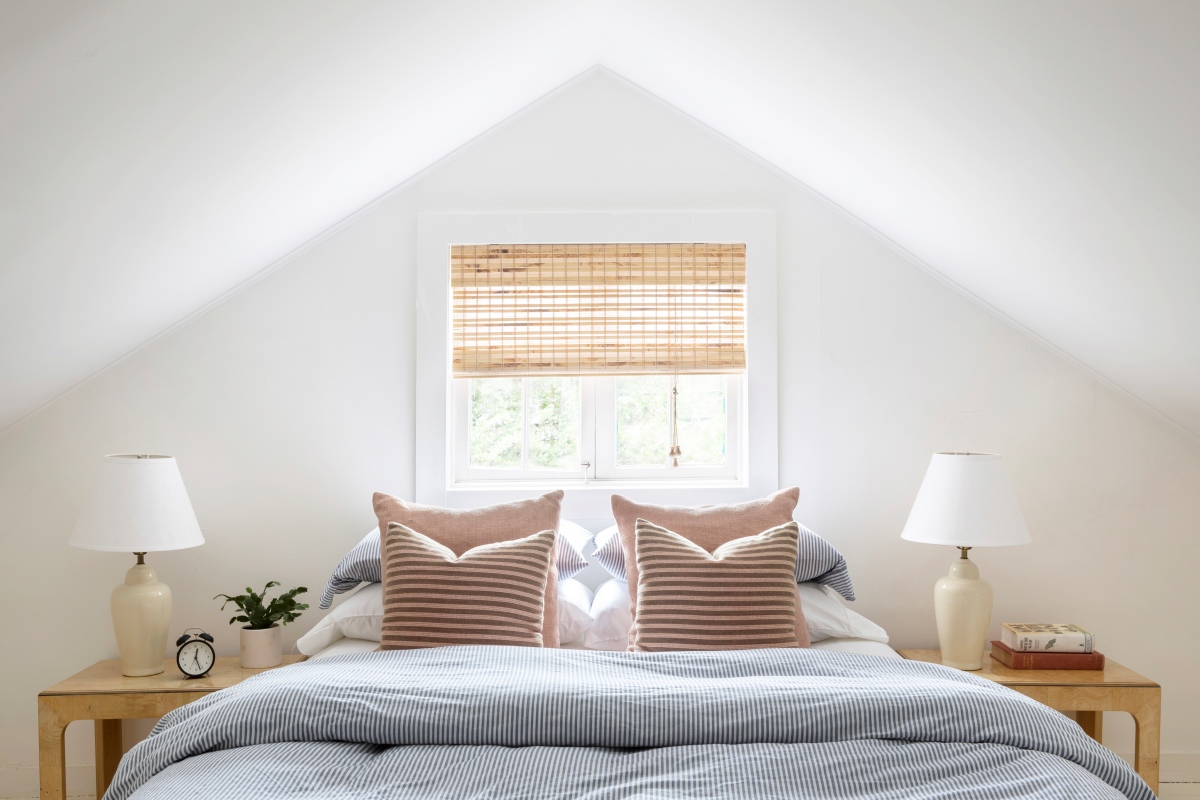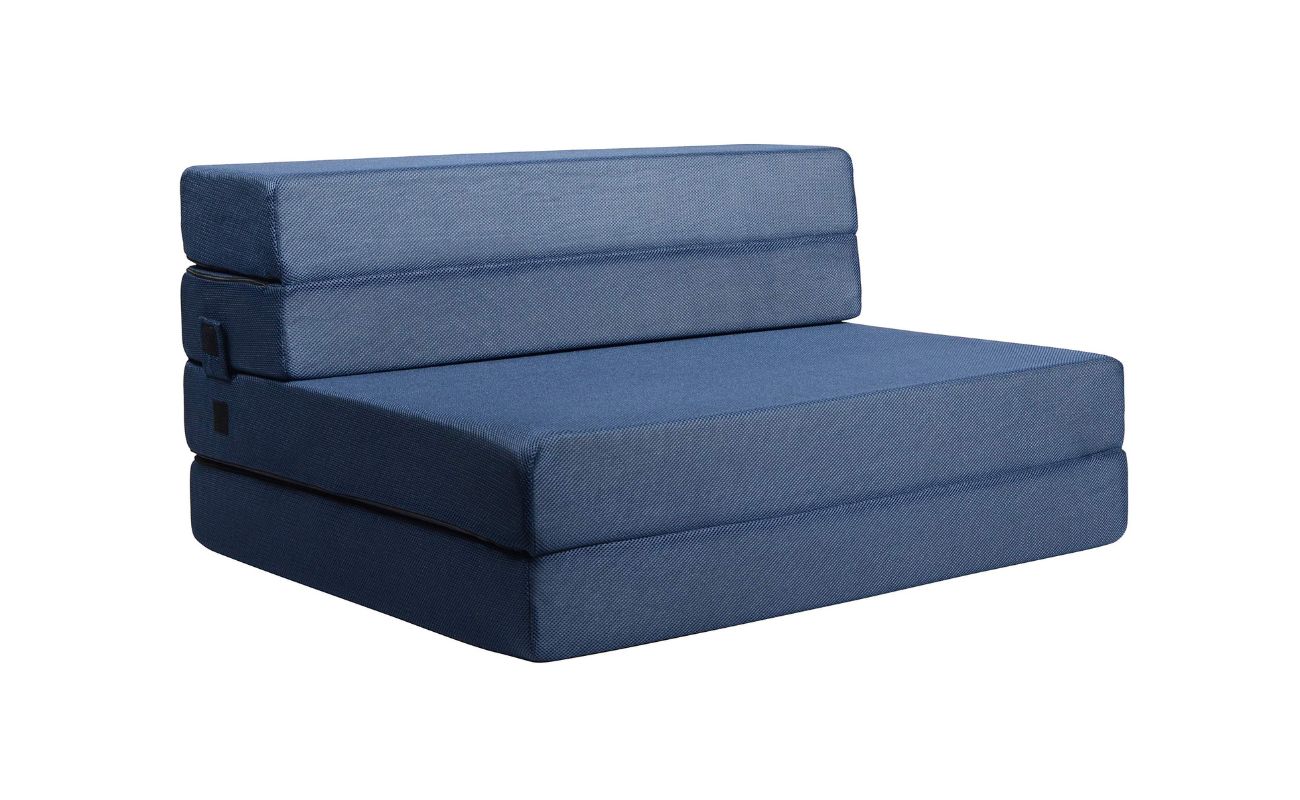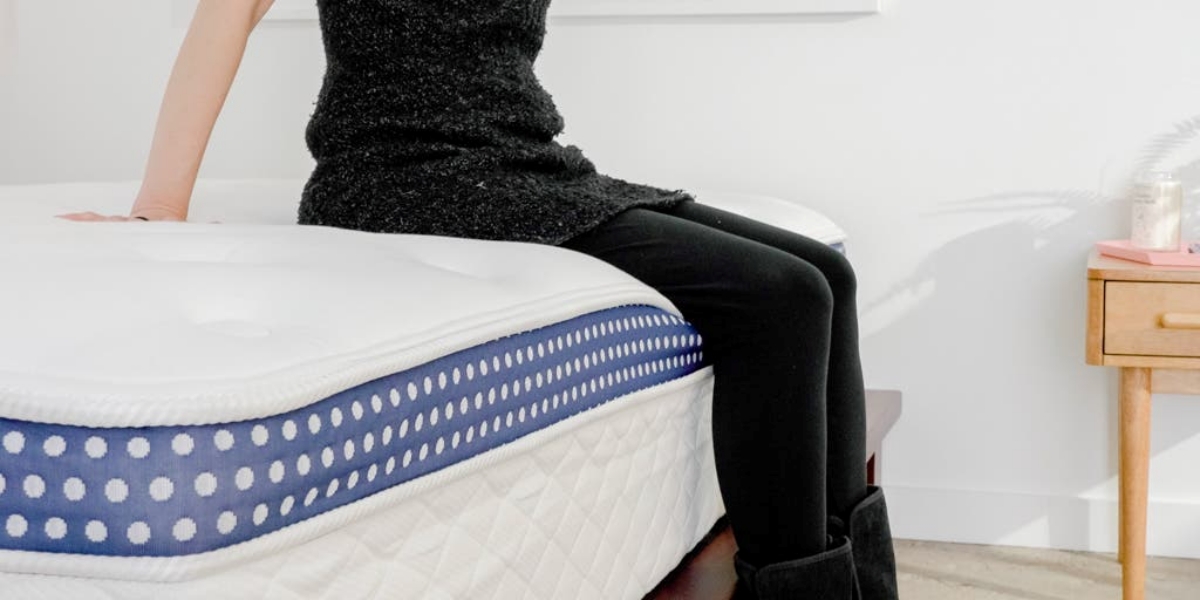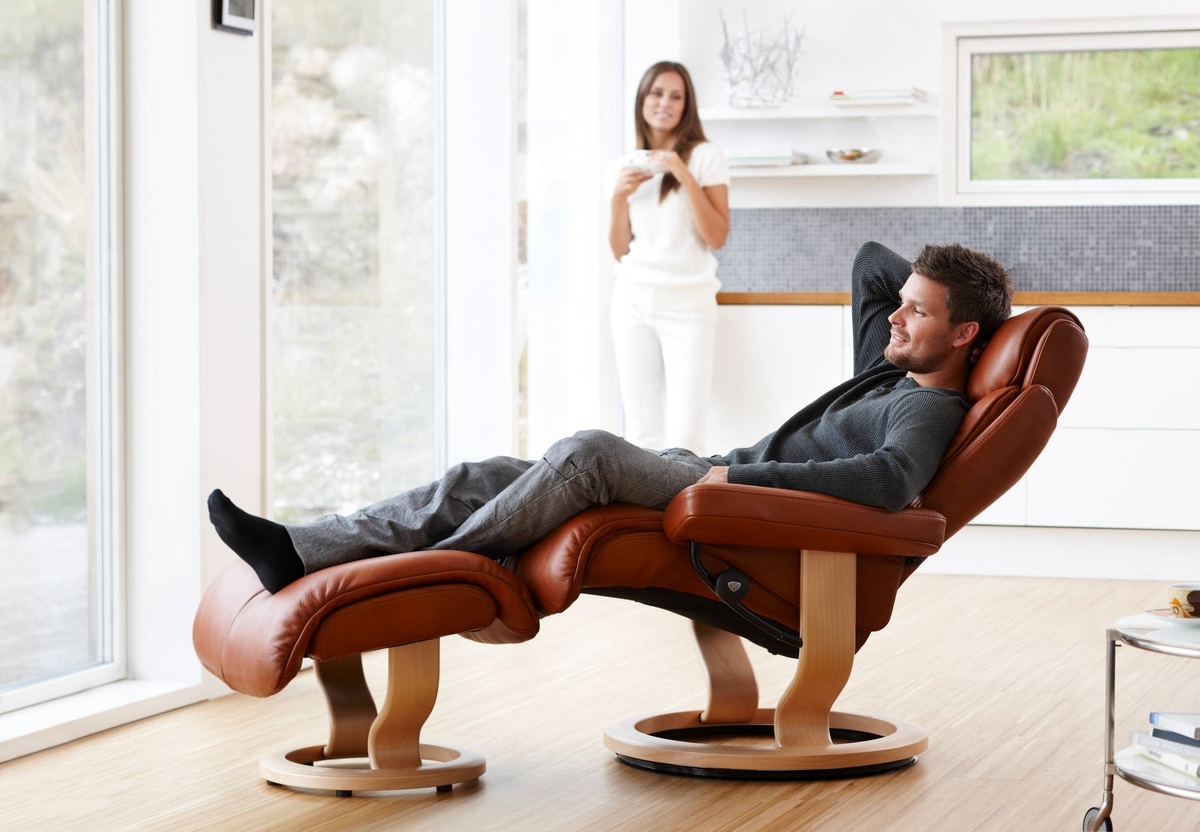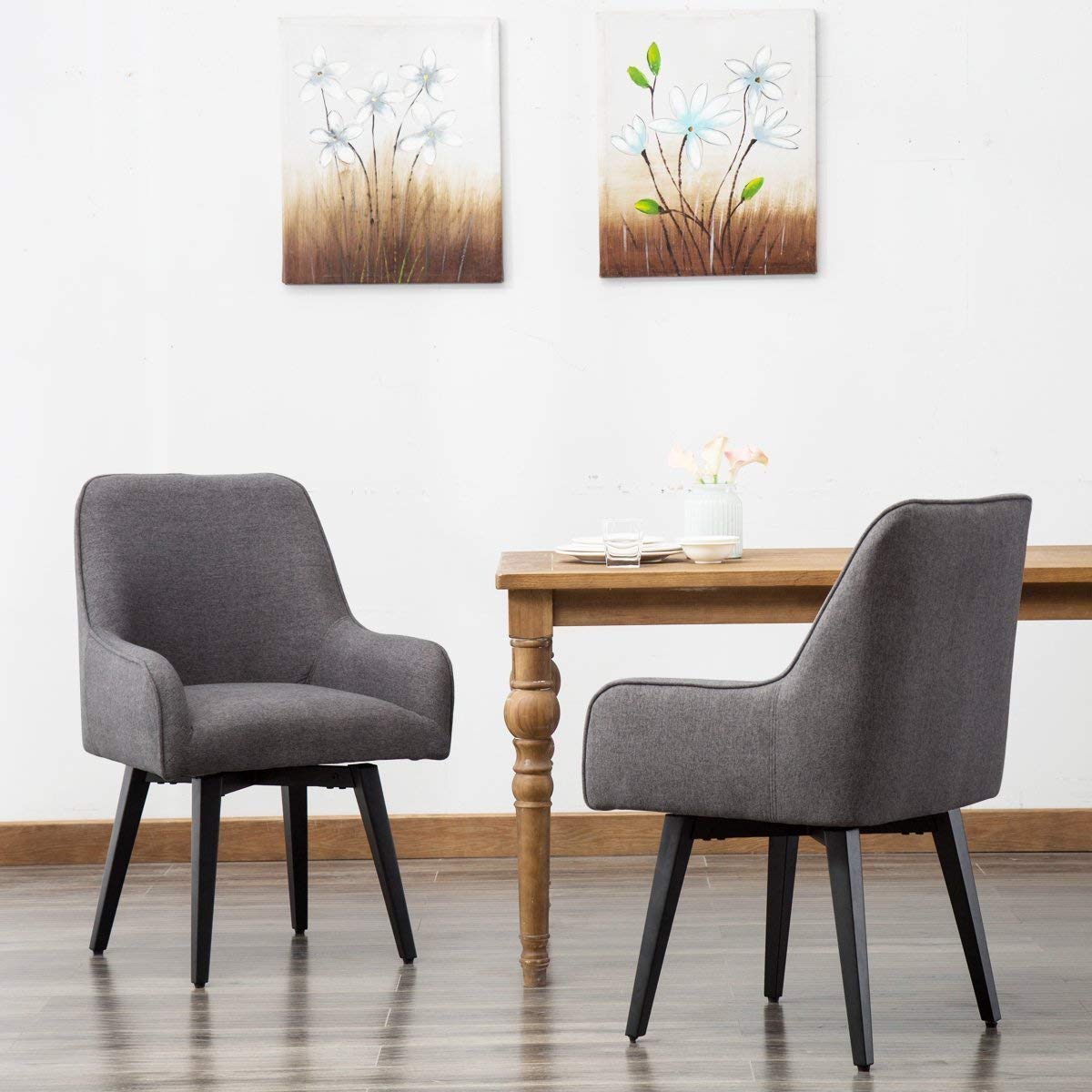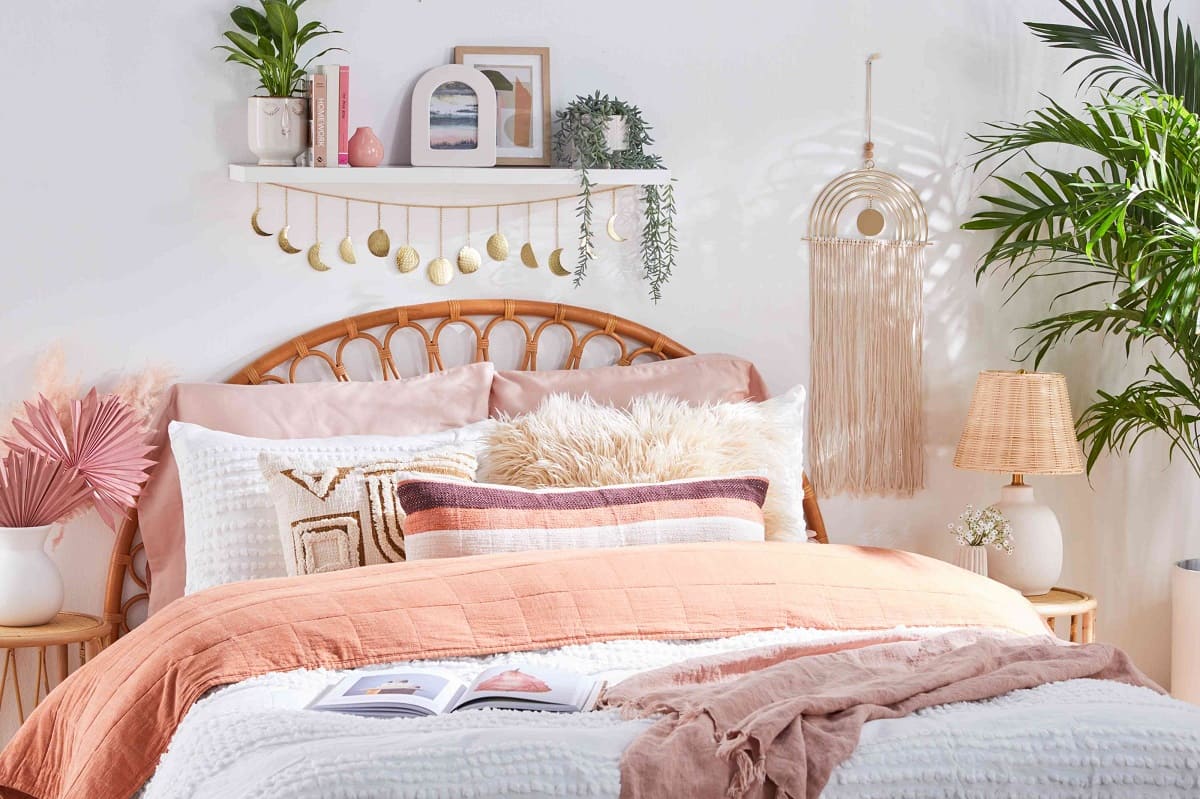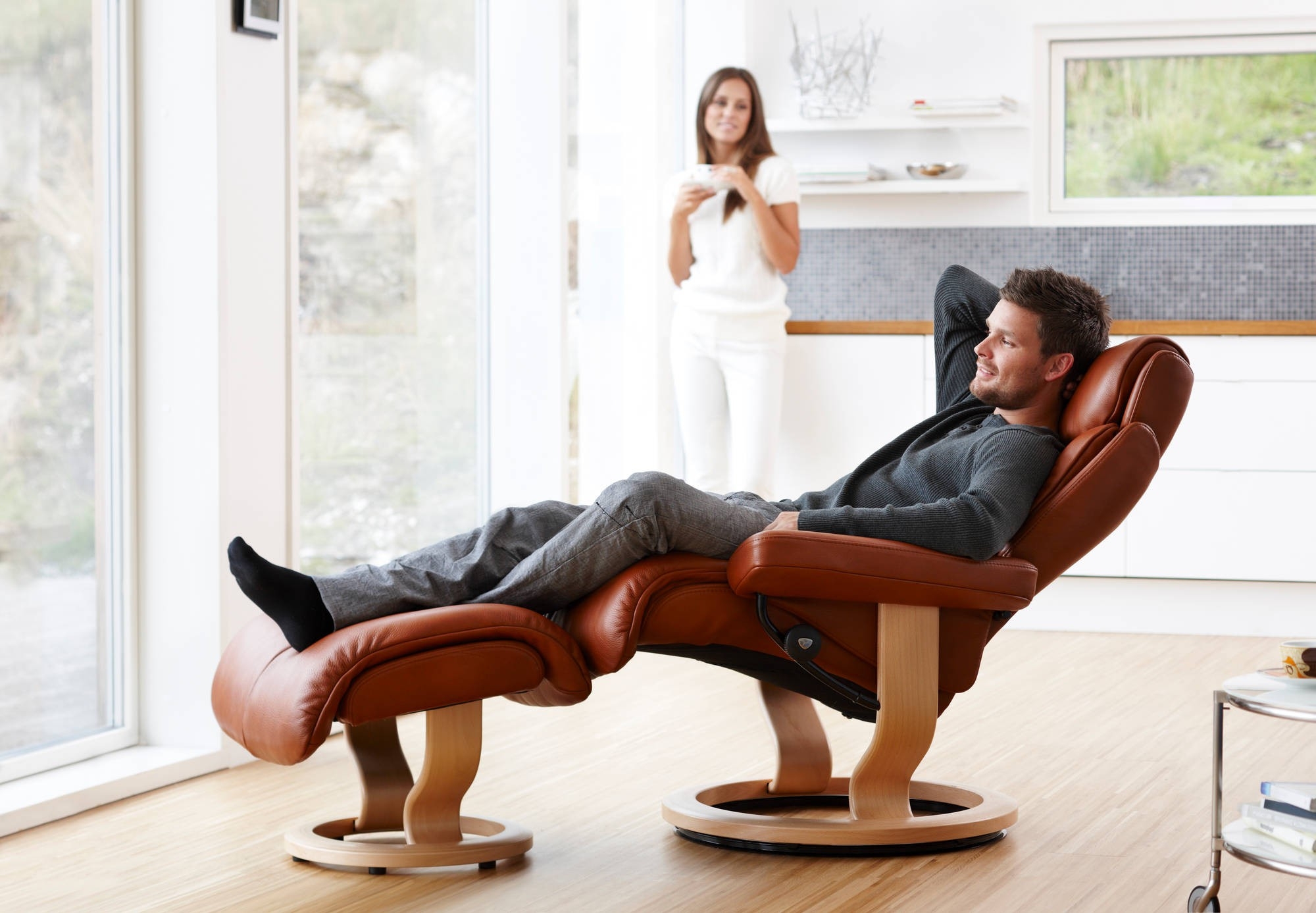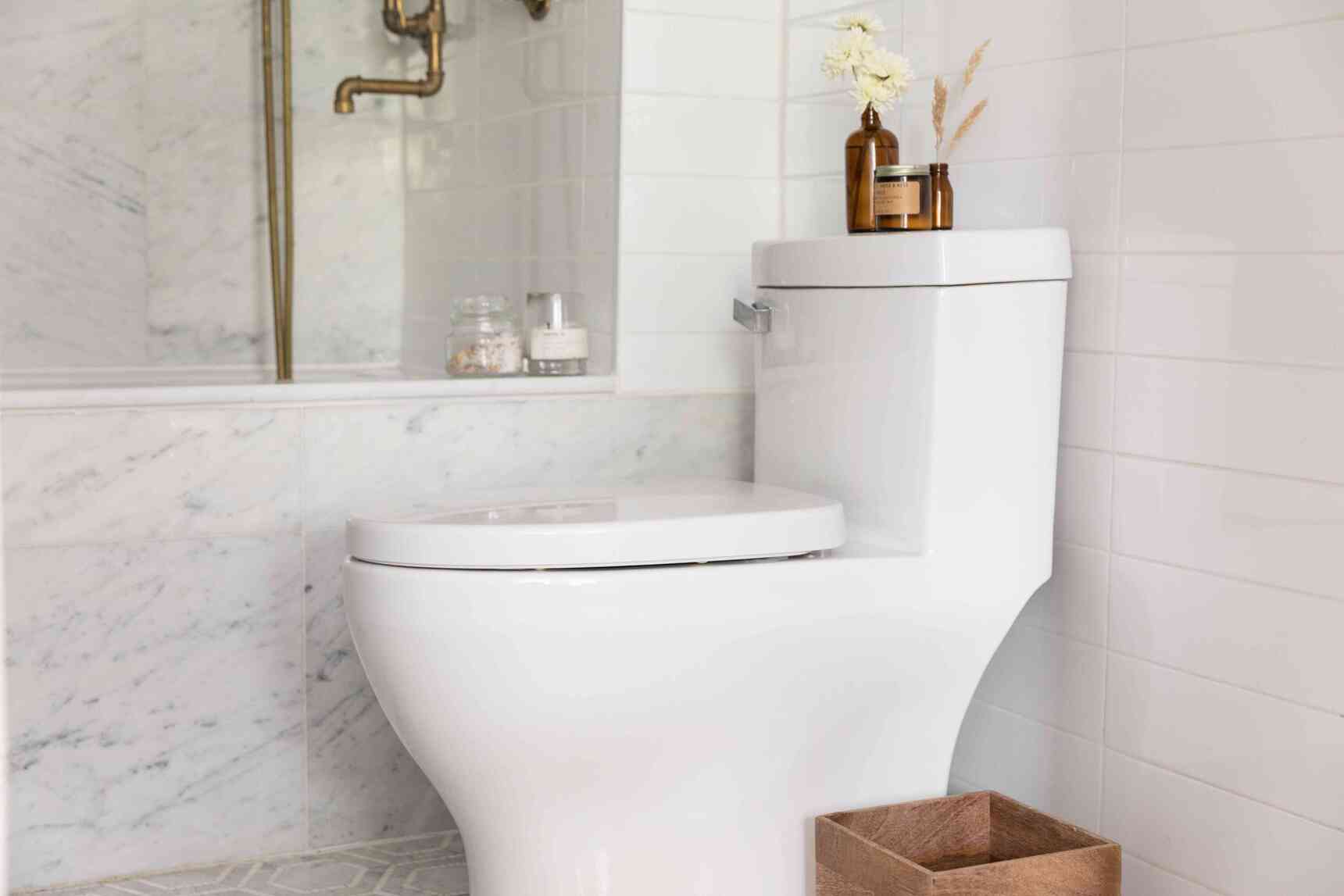Home>Furniture>Bedroom Furniture>How To Make Mattress Comfortable
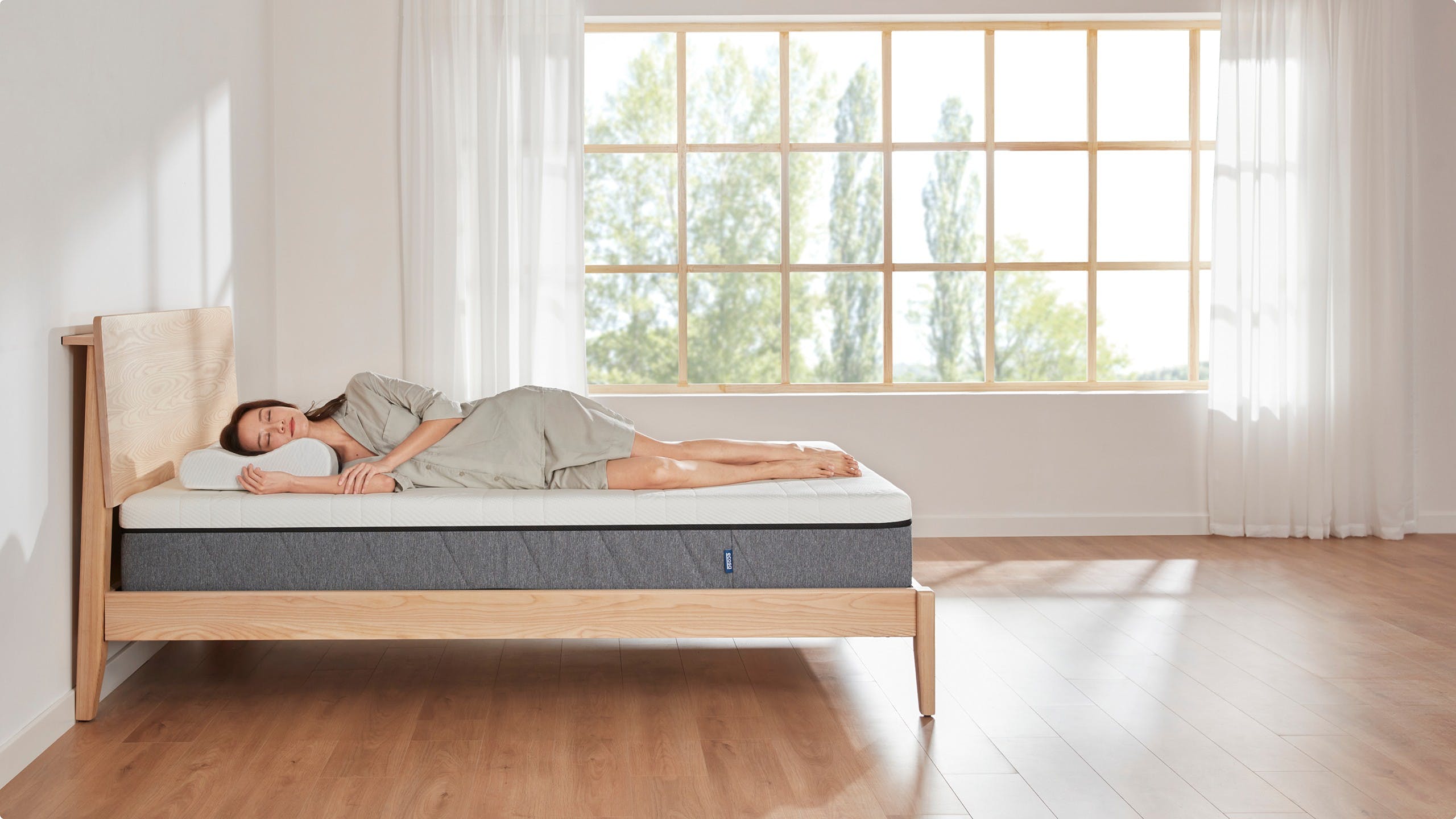

Bedroom Furniture
How To Make Mattress Comfortable
Modified: January 9, 2024
Learn how to make your bedroom furniture more comfortable with our helpful tips and tricks. Improve your mattress for a better night's sleep.
(Many of the links in this article redirect to a specific reviewed product. Your purchase of these products through affiliate links helps to generate commission for Storables.com, at no extra cost. Learn more)
Introduction
Welcome to the ultimate guide on how to make your mattress comfortable. Your bedroom should be a sanctuary, and your mattress plays a significant role in ensuring a restful and rejuvenating sleep. A comfortable mattress can make all the difference in how well you sleep at night and how refreshed you feel in the morning.
Choosing the right mattress is the first step in creating a comfortable sleep environment. With so many options available today, it can be overwhelming to make the best choice. But fear not! We will guide you through the process of selecting the perfect mattress that suits your needs and preferences.
Once you have chosen the right mattress, we will explore various mattress topper options that can further enhance its comfort. Mattress toppers come in different materials and thicknesses, allowing you to customize your sleep surface to your liking.
But comfort is not just limited to the mattress. The right pillows also play a crucial role in ensuring a comfortable sleep. We will discuss how to choose the right pillows based on your sleeping position and preferences to provide optimal support and comfort for your head and neck.
Proper bedding and linens are also essential components of a comfortable sleep environment. We will walk you through the materials, thread counts, and other factors to consider when selecting sheets, blankets, and duvets that promote coziness and breathability.
Temperature regulation is another key factor in creating a comfortable sleep environment. We will provide tips on how to keep your bed cool in the summer and warm in the winter, ensuring that you sleep at the ideal temperature for a restful night’s sleep.
Adjusting your bed frame and foundation can also contribute to the overall comfort of your mattress. We will cover how to properly align your bed frame, adjust slats, and ensure that your mattress is properly supported to avoid sagging and discomfort.
Maintaining cleanliness and hygiene is vital for a comfortable sleep environment. We will delve into how to keep your mattress clean and free from allergens, dust mites, and other irritants that can impact your sleep quality.
Lastly, we will discuss the importance of regularly fluffing and rotating your mattress to prevent uneven wear and maintain its comfort and longevity. We will provide step-by-step instructions on how to properly care for and maintain your mattress.
By following the tips and guidelines laid out in this comprehensive guide, you can transform your mattress into a haven of comfort and ensure that you wake up feeling refreshed and rejuvenated each morning. Let’s dive in!
Key Takeaways:
- Choose the right mattress based on your sleep position, body type, and budget to ensure optimal comfort and support for a restful night’s sleep.
- Enhance your sleep environment with mattress toppers, pillows, and bedding that suit your preferences, and maintain cleanliness and temperature regulation for a comfortable and rejuvenating sleep experience.
Read more: How To Make An Air Mattress Comfortable
Choosing the Right Mattress
When it comes to choosing a mattress, there is no one-size-fits-all solution. Different people have different sleep preferences, body types, and specific needs. Therefore, it’s essential to consider a few key factors to find the right mattress that suits your individual requirements and ensures a comfortable sleep experience.
The first factor to consider is your preferred sleep position. Whether you sleep on your back, side, stomach, or a combination of these positions, each posture has specific needs. Back sleepers generally require a mattress that provides adequate support for the spine, while side sleepers may benefit from a slightly softer mattress to cushion the pressure points. Stomach sleepers often find firmer mattresses more comfortable to maintain proper alignment.
Another crucial factor to consider is your body type and weight. For individuals who are heavier, a firmer mattress is usually recommended to prevent sinking too deeply. On the other hand, lighter individuals may find a softer mattress more comfortable and contouring to their body shape.
Take into account any specific health conditions or concerns you may have. For example, if you suffer from back pain, you may want to consider a mattress that provides excellent lumbar support. If you have allergies or sensitivities to certain materials, opt for hypoallergenic and non-toxic mattress options.
Durability and longevity should also be considered when selecting a mattress. Look for mattresses made from high-quality materials that are designed to withstand regular use without sagging or losing their shape. Check for warranties and customer reviews to gauge the mattress’s long-term performance and durability.
Finally, don’t forget to consider your budget. Mattresses come in a wide price range, and while it’s important to invest in a quality mattress, you should also find one that fits within your budget. Take advantage of sales and promotions to get the best value for your money.
Visiting a mattress store and testing out different options in person can be beneficial. Lie down on the mattresses and spend a few minutes in different sleep positions to see how they feel. This hands-on experience will give you a better sense of the comfort, support, and firmness levels that suit you best.
To summarize, when choosing the right mattress, consider factors such as your sleep position, body type, specific needs, health conditions, durability, and budget. By taking the time to select a mattress tailored to your requirements, you can ensure maximum comfort and a restful night’s sleep.
Mattress Topper Options
If you want to add an extra layer of comfort and support to your mattress, a mattress topper can be a game-changer. Mattress toppers are available in various materials and thicknesses, allowing you to customize your sleep surface to suit your preferences. Let’s explore some popular mattress topper options:
- Memory Foam: Memory foam mattress toppers are known for their contouring properties. They conform to your body shape, relieving pressure points and providing excellent support. Memory foam toppers are ideal for those who prefer a plush and cradling feel when they sleep.
- LATEX: Latex mattress toppers are made from natural or synthetic latex materials. They offer a balance of comfort and support, as they contour to your body while providing responsive and resilient support. Latex toppers are a suitable choice for those who prefer a medium to firm feel and want to sleep cool.
- Feather and Down: Feather and down mattress toppers provide a luxurious and soft sleep surface. They offer exceptional comfort and plushness. These toppers are ideal for those who prefer a cloud-like feel and want to add extra warmth to their mattress.
- Fiberfill: Fiberfill mattress toppers are made from synthetic or natural fibers. They are hypoallergenic, lightweight, and offer a soft and plush sleep surface. Fiberfill toppers are an excellent choice for those who prefer a gentle cushioning feel and want to add extra coziness to their mattress.
- Gel-infused: Gel-infused mattress toppers combine the benefits of memory foam with cooling gel technology. These toppers provide the contouring and pressure-relieving properties of memory foam, while the gel infusion helps dissipate heat, keeping you cool throughout the night.
- Wool: Wool mattress toppers offer natural temperature regulation, moisture-wicking properties, and excellent breathability. They provide a comfortable and soft sleep surface while helping to keep you cool in the summer and warm in the winter.
When choosing a mattress topper, consider factors such as the material’s breathability, hypoallergenic properties, thickness, and the level of support and comfort you desire. Additionally, check for certifications like CertiPUR-US® for foam toppers to ensure they meet strict standards for content, emissions, and durability.
It’s also essential to keep in mind that a mattress topper can change the feel and firmness of your mattress. If you have a firm mattress and want a softer feel, opt for a thicker and more plush topper. Conversely, if you have a softer mattress and need more support, choose a firmer topper.
Finally, consider the maintenance and cleaning requirements of the mattress topper. Some toppers are machine washable, while others require spot cleaning or professional cleaning. Choose a topper that fits your lifestyle and is easy to keep clean and fresh.
By selecting the right mattress topper, you can greatly enhance the comfort and support of your mattress, ensuring a blissful and restorative sleep experience each night.
Choosing the Right Pillows
When it comes to a good night’s sleep, pillows play a significant role in providing proper support and aligning the head and neck. Choosing the right pillows tailored to your sleeping position and personal preferences can make a world of difference in your sleep quality. Here are some tips to help you find the perfect pillows:
- Sleeping Position: Consider your preferred sleeping position when selecting pillows. Side sleepers typically benefit from firmer pillows that help align the neck and spine. Back sleepers may prefer medium-firm pillows that provide adequate support without causing the neck to tilt too far forward or backward. Stomach sleepers generally need softer and flatter pillows to minimize strain on the neck.
- Fill Material: Pillows are available in various fill materials, each offering different benefits. Some popular options include:
- Memory Foam: Memory foam pillows contour to the shape of your head and neck, providing excellent support and pressure relief.
- Down and Feather: Down and feather pillows offer a luxurious and soft feel. They provide excellent cushioning and conformability.
- Polyester or Fiberfill: Polyester or fiberfill pillows are hypoallergenic and offer gentle support. They are a more affordable option.
- Latex: Latex pillows are resilient and supportive. They provide a cooler sleep surface and are naturally hypoallergenic.
- Size: Choose pillows that match the size of your bed and your body frame. Standard pillows are usually suitable for twin and full-size beds, while queen or king-size pillows are better suited for larger beds. Body pillows or bolster pillows can be great options for those who need extra support or prefer a more extensive sleeping surface.
- Support and Loft: Consider the level of support and loft (pillow height) that is most comfortable for you. Some individuals prefer a higher loft to keep their head and neck elevated, while others prefer a flatter pillow for a more minimalistic feel. Adjustability, such as pillows with removable inserts or adjustable air chambers, can be beneficial for finding the perfect support and loft level.
- Allergies and Breathability: If you have allergies or sensitivities, opt for hypoallergenic pillows. Look for pillows with natural or synthetic materials that are resistant to dust mites, mold, and other allergens. Additionally, consider pillows with breathable covers or materials that facilitate airflow for a cooler and more comfortable sleep.
It’s also essential to consider your personal preferences and comfort level when choosing pillows. Some individuals like a softer, cloud-like feel, while others prefer a firmer, more supportive pillow. Take the time to try out different pillow options and see which ones provide the right combination of support and comfort for you.
Remember to replace your pillows regularly to maintain their support and hygiene. Pillows typically have a lifespan of 1 to 2 years, depending on the quality and usage. If your pillows become lumpy, lose their shape, or cause discomfort, it’s time for a replacement.
By selecting the right pillows based on your sleeping position, fill material, size, support and loft preferences, and considering factors like allergies and breathability, you can enhance your sleep comfort and wake up feeling refreshed and rejuvenated each day.
Proper Bedding and Linens
Creating a comfortable and inviting sleep environment involves more than just choosing the right mattress and pillows. The bedding and linens you use can greatly impact your sleep quality and overall comfort. Here are some tips for selecting proper bedding and linens:
- Sheets: Consider the material, thread count, and weave of the sheets. Cotton is a popular choice for its breathability and softness. Look for high-quality cotton sheets with a thread count of at least 300 for optimal comfort. Sateen and percale weaves offer different textures and feel, so choose the one that suits your preference.
- Blankets: Choose blankets that provide the right amount of warmth and coziness for your needs. Lightweight cotton or linen blankets are perfect for the summer months, while thicker fleece or wool blankets are ideal for colder seasons. Consider using multiple layers of blankets to easily adjust to changing temperatures during the night.
- Duvets and Comforters: Duvets and comforters not only add warmth but also contribute to the overall aesthetic of your bedroom. Look for duvets or comforters with a fill power that suits your desired level of warmth and loft. Opt for hypoallergenic options if you have sensitivities or allergies.
- Pillowcases: Pillowcases should be soft, breathable, and comfortable against your skin. Consider materials such as cotton, silk, or bamboo for a luxurious feel. Ensure that the pillowcases are the correct size to fit your pillows snugly without being too tight or loose.
- Mattress Protectors: Investing in a mattress protector is essential to protect your mattress from spills, stains, and allergens. Choose a waterproof and breathable protector that fits securely and does not affect the comfort and breathability of your mattress.
- Pillow Protectors: Pillow protectors not only prolong the life of your pillows but also provide a hygienic barrier against dust mites and allergens. Look for pillow protectors made from breathable and hypoallergenic materials that are easy to remove and wash.
- Decorative Pillows and Throws: Adding decorative pillows and throws to your bed can enhance its visual appeal and comfort. Choose pillows and throws that complement your bedroom decor and add a touch of coziness. However, remove excessive decorative pillows and throws before bedtime to avoid clutter and promote better sleep hygiene.
It’s important to keep your bedding and linens clean and fresh. Wash your sheets and pillowcases regularly to remove dust, sweat, and allergens. Follow the care instructions provided by the manufacturer to ensure that your bedding items maintain their quality and softness over time.
Remember, comfort is subjective, so choose bedding and linens that align with your personal preferences and promote a peaceful and restful sleep environment. By selecting high-quality materials, maintaining cleanliness, and ensuring the right level of warmth and softness, you can create a haven of comfort and relaxation in your bedroom.
Consider adding a mattress topper for extra cushioning and support. This can help improve the comfort of your mattress without having to invest in a new one.
Read more: How To Make A Mattress More Comfortable
Temperature Regulation
Keeping the temperature of your sleep environment at an optimal level is crucial for a comfortable and uninterrupted night’s sleep. When the temperature is too hot or too cold, it can lead to restlessness and impact the quality of your sleep. Here are some tips for temperature regulation in the bedroom:
- Choose Breathable Bedding: Opt for bedding materials that promote breathability and airflow, such as cotton or linen. These natural fibers allow heat to dissipate, keeping you cool during warmer seasons. Avoid bedding made of synthetic materials that can trap heat and cause discomfort.
- Use a Mattress with Cooling Properties: Consider investing in a mattress that features cooling properties, such as gel-infused foam or breathable materials. These mattresses can help regulate your body temperature by dissipating heat and promoting airflow.
- Adjust Room Temperature: Set the thermostat in your bedroom to a temperature that is comfortable for you. The ideal room temperature for sleep is typically between 60 and 67 degrees Fahrenheit (15-19 degrees Celsius). Experiment to find the temperature that works best for you.
- Utilize Fans or Air Conditioning: Use fans or air conditioning to maintain a cool and comfortable sleep environment, especially during hot summer nights. Position fans to circulate air in the bedroom and create a gentle breeze that helps regulate body temperature.
- Invest in Blackout Curtains or Blinds: Blackout curtains or blinds can help block out excessive sunlight and heat during the day, keeping your bedroom cooler. This can be particularly beneficial if you live in a warm climate or have windows that face direct sunlight.
- Consider Bedding Layers: Use multiple layers of bedding, such as lightweight blankets or sheets, that you can easily adjust throughout the night. This allows you to add or remove layers depending on your body temperature and personal preferences.
- Use Cooling Accessories: Explore cooling accessories specifically designed for sleep, such as cooling pillows, mattress toppers, or mattress pads. These products are designed to help regulate body temperature and provide a cooler sleep surface.
- Maintain Proper Ventilation: Ensure that your bedroom is well-ventilated to prevent stale air and humidity. Open windows or use a ceiling or portable fan to promote air circulation and freshen up the room.
- Consider Your Pajamas: Choose lightweight and breathable sleepwear made of natural materials like cotton or silk. These fabrics allow your skin to breathe and prevent overheating during sleep.
Experiment with different temperature regulation techniques to find what works best for you. Everyone has different temperature preferences, so it’s important to create a sleep environment that suits your individual needs.
By implementing these temperature regulation tips, you can create a comfortable and thermally balanced sleep environment that promotes better sleep quality and overall well-being.
Adjusting Bed Frame and Foundation
Having a properly adjusted bed frame and foundation is essential for optimal comfort and support. Here are some tips on how to adjust your bed frame and foundation to ensure a comfortable and restful sleep:
- Check for Stability: Start by checking the stability of your bed frame. Ensure that all the joints and connections are secure and tightened. If you notice any loose or wobbly parts, tighten them or consider replacing the frame if necessary.
- Align the Bed Frame: Make sure that your bed frame is properly aligned in your bedroom. Check that the frame is level and not slanted or uneven. Adjust the frame as needed to ensure a balanced and stable sleep surface.
- Adjust Bed Height: Consider the height of your bed and adjust it to your preference. Some people prefer a higher bed, while others find a lower bed more comfortable. Keep in mind your own height and mobility when deciding on the height of your bed.
- Test the Foundation: If you have a foundation or box spring beneath your mattress, check its condition. Ensure that it provides even support and does not sag or squeak. If needed, replace the foundation to maintain a supportive sleep surface.
- Use Mattress Supports: Some bed frames come with mattress supports or slats. Ensure that these supports are evenly spaced and provide sufficient support to prevent sagging. Adjust the supports as necessary to maintain the integrity and comfort of your mattress.
- Consider Adjustable Bed Bases: If you want greater control over your sleep position, consider investing in an adjustable bed base. These bases allow you to adjust the inclination of the head and foot of the bed, providing personalized comfort and support for activities like reading or watching TV.
- Check for Noise: If your bed frame or foundation makes noise when you move or shift your weight, it can disrupt your sleep. Apply lubrication to any squeaky parts or consider adding padding or rubber stops to minimize noise and enhance the overall sleep experience.
- Ensure Proper Mattress Fit: Make sure that your mattress fits snugly on the bed frame or foundation. Measure your mattress and compare it to the dimensions of your bed frame. A proper fit will prevent unnecessary shifting or movement of the mattress during sleep.
- Consult the Manufacturer’s Instructions: Every bed frame and foundation may have specific instructions for adjustment and maintenance. Refer to the manufacturer’s guidelines to ensure you are maximizing the comfort and lifespan of your bed frame and foundation.
By properly adjusting your bed frame and foundation, you can provide the necessary support for your mattress and ensure a comfortable sleep surface. Take the time to assess and make any necessary adjustments to create an optimal sleep environment.
Maintaining Cleanliness and Hygiene
Maintaining cleanliness and hygiene in your bedroom is essential for a comfortable and healthy sleep environment. A clean and fresh bed not only promotes better sleep but also helps prevent allergies and other potential health issues. Here are some tips for maintaining cleanliness and hygiene in your bedroom:
- Wash Bedding Regularly: Wash your sheets, pillowcases, and blankets regularly to remove sweat, dead skin cells, and allergens. Aim to launder them at least once every one to two weeks, or more frequently if needed. Follow the care instructions provided by the manufacturers for proper washing and drying.
- Use Mattress and Pillow Protectors: Protect your mattress and pillows from spills, stains, and allergens by using mattress and pillow protectors. These protective covers create a barrier against dust mites, bed bugs, and other common allergens. Wash the protectors regularly to ensure continued cleanliness.
- Rotate and Flip Your Mattress: Regularly rotate and flip your mattress if it is designed to be reversible. This helps distribute the wear and tear more evenly, preventing sagging and extending the lifespan of your mattress. Consult your mattress manufacturer’s guidelines for the recommended rotation schedule.
- Vacuum and Dust: Vacuum and dust your bedroom regularly to remove dust, pet dander, and other allergens from the floor, surfaces, and furniture. Pay extra attention to areas around your bed, such as under the bed frame, to ensure a thorough cleaning.
- Avoid Eating in Bed: Minimize the risk of stains and crumbs by avoiding eating in bed. Food particles can attract pests and cause odors. If you must have a snack or drink in bed, use a tray or table to contain any spills or crumbs.
- Control Humidity and Ventilation: Maintain proper humidity levels in your bedroom to prevent the growth of mold and mildew. Use a dehumidifier or open windows when needed to promote proper ventilation and airflow.
- Clean Mattress Stains Promptly: If you accidentally spill something on your mattress, clean it promptly to prevent stains and odors. Blot the stain with a mild detergent and warm water, being careful not to saturate the mattress. Allow the area to dry completely before adding bedding or using the mattress.
- Replace Pillows when Necessary: Pillows should be replaced every 1 to 2 years, depending on their quality and condition. If your pillows become lumpy, flat, or uncomfortable, it’s time for a replacement. Consider opting for hypoallergenic and washable pillows for easier maintenance.
- Control Pet Access: If you have pets, try to limit their access to your bedroom to minimize the transfer of pet hair and dander. Regularly groom your pets to reduce shedding and vacuum your bedroom frequently to remove any pet-related allergens.
By following these cleanliness and hygiene practices, you can create a clean and inviting sleep environment that promotes restful sleep and provides a healthier atmosphere for you to enjoy.
Regularly Fluffing and Rotating Mattress
Regularly fluffing and rotating your mattress is an important part of ensuring its longevity and maintaining its comfort. Over time, mattresses can develop indentations and uneven wear due to the weight and pressure exerted on them. Here are some tips on how to properly fluff and rotate your mattress:
Fluffing:
- Remove Bedding: Start by removing all bedding, including sheets, blankets, and mattress protectors, from your mattress. This will allow you to work on the mattress surface more effectively.
- Vacuum: Use a vacuum cleaner with a brush attachment to gently vacuum the surface of the mattress. This will help remove any dust, dirt, or debris that may have settled on the surface.
- Rotate: Rotate your mattress 180 degrees to promote more even wear. For example, if the head of the mattress was previously facing north, it should now be facing south. This will distribute the weight and pressure on different areas of the mattress, preventing uneven sagging.
- Fluffing: Once the mattress is rotated, grab the sides of the mattress and give it a few gentle shakes. This helps to redistribute the internal materials and fibers, restoring the mattress’s loft and shape.
- Allow Air Circulation: After fluffing, leave your mattress uncovered for a few hours to allow air circulation. This helps to freshen up the mattress and remove any trapped moisture or odors.
Rotation Frequency:
It is generally recommended to rotate your mattress every 3 to 6 months. However, this can vary depending on the type of mattress you have and the manufacturer’s guidelines. Some mattresses may require more frequent rotation, while others may be designed to be one-sided and not require rotation at all.
Consult your mattress manufacturer’s instructions or warranty guidelines for specific recommendations on the frequency and method of rotation.
Regularly fluffing and rotating your mattress can help extend its lifespan, prevent sagging, and ensure consistent comfort and support. It allows for more even distribution of weight and pressure on the mattress, reducing the likelihood of developing uncomfortable indentations or uneven wear over time.
By incorporating this simple maintenance routine into your mattress care, you can enjoy a more comfortable and supportive sleep surface for years to come.
Read more: How To Make My Mattress More Comfortable
Conclusion
Creating a comfortable sleep environment is essential for getting the restful and rejuvenating sleep you deserve. By following the tips and guidelines provided in this comprehensive guide, you can transform your bedroom into an oasis of comfort and relaxation.
Start by choosing the right mattress that suits your sleeping position, body type, and personal preferences. Consider factors such as support, firmness, and durability to ensure a mattress that provides optimal comfort and promotes proper alignment of your spine.
Enhance the comfort of your mattress by adding a mattress topper that suits your needs. Whether you prefer memory foam, latex, feather, or down, there are various options available to customize your sleep surface and provide additional cushioning and support.
Don’t forget the importance of choosing the right pillows. Your sleeping position and personal preferences should guide your selection. Look for pillows that offer the right level of support and ensure proper alignment of your head and neck. And, of course, invest in high-quality bedding and linens that are soft, breathable, and suited to your style and comfort preferences.
To ensure a comfortable sleep environment, pay attention to temperature regulation. Use breathable bedding materials, adjust the room temperature, and consider using fans or air conditioning if necessary. Properly adjusting your bed frame and foundation is also crucial for maintaining a supportive and stable sleep surface.
Keep your bedroom clean and hygienic by washing bedding regularly, using mattress and pillow protectors, and removing allergens and dust. Regularly fluff and rotate your mattress to prevent sagging and maintain its comfort and longevity.
In conclusion, prioritize your sleep comfort and create a bedroom environment that promotes restful nights and energetic mornings. By implementing the tips and strategies outlined in this guide, you can achieve the ultimate comfort and enjoy the full benefits of a good night’s sleep.
Remember, everyone’s preferences and needs are unique, so feel free to tailor these suggestions to your personal taste. Sweet dreams!
Frequently Asked Questions about How To Make Mattress Comfortable
Was this page helpful?
At Storables.com, we guarantee accurate and reliable information. Our content, validated by Expert Board Contributors, is crafted following stringent Editorial Policies. We're committed to providing you with well-researched, expert-backed insights for all your informational needs.
